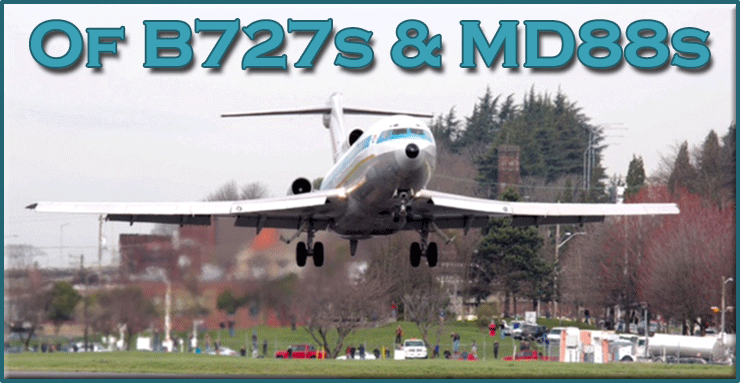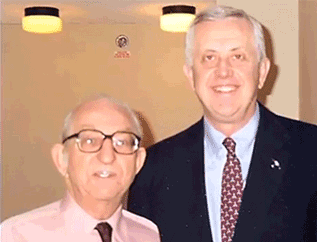
On
March 2 the first Boeing 727 (N7001U) ever built took
off for its final flight, traveling from Paine Field
in Everett, Washington, to Boeing Field in Seattle.
The plane will go on
permanent display at the Museum of Flight as part of
Boeing's centennial celebration at the museum.
The B727 was restored
inside and out at the Museum of Flight Restoration Center
at Paine Field.
In service with United
Airlines, the N7001U’s first flight was on February
9, 1963.
During its career at
United Airlines it carried about 3 million passengers.
The B727 was a huge success.
With 1,831 aircraft built,
the B727 was the first commercial jetliner to sell more
than 1,000 aircraft.
The B727 is credited
with keeping open smaller, inner-city airports like
LaGuardia (New York), Midway (Chicago), and Templhof
(Berlin) because it made money on short haul flights
and had the ability to get in and out of limited ground
and air space facilities.
DC9
Born In 1965
 A little known highlight in all of this is something
my friend and colleague, the late REG Davies, (pictured
here) told me.
A little known highlight in all of this is something
my friend and colleague, the late REG Davies, (pictured
here) told me.
Ron served for 40 years
as Curator of Air Transport at NASM in Washington, but
prior to that he worked at Douglas Aircraft for Donald
Douglas in Santa Monica and Long Beach, California.
“Douglas had a
plan to build a short range twin- engine jet aircraft,
but during the late 1950s [while] awaiting engine development
was focused instead on a bigger, four-engine long range
jet (DC8) to replace the DC7 for trans con and international
range flight.
“I recall engineers
from Boeing who we thought were primarily focused on
building long range aircraft, visiting our offices in
Santa Monica and spending hours talking about our plans
for the DC9.
“The upshot is
that the B727 tri-jet in 1963 beat the twin engine DC9
(1965) to market, although Douglas might have delivered
the DC9 first.
“Of course, the
B727 with three engines set records and out of the gate
first was a runaway success.”
Fast
Forward to 2016
In an interesting twist
of fate, the B727 tri-jet has been out of service since
1983 because of fuel costs and environmental concerns,
and the DC9—more economical, and with twin engines—has
survived in various updated forms and is still in service
today.
The later twin jet series
includes the MD-81, MD-82, MD-83, MD-87, and MD-88.
The MD-88 model is still
flown extensively by American Airlines and Delta Air
Lines.
The last version, the
MD-95, was renamed Boeing 717 after the McDonnell Douglas-Boeing
merger in 1997.
In total, the series
that began with the DC9 in 1965 and ended with the MD-95-B717
in 2006 lasted 41 years, with over 2,400 aircraft built.
Geoffrey |





